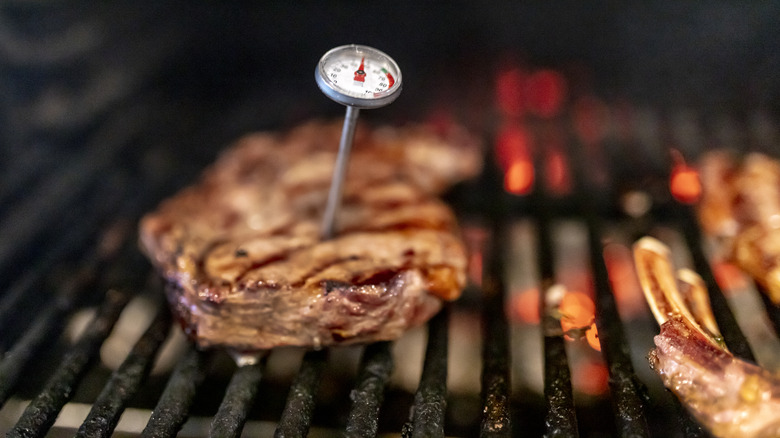This Is How J. Kenji López-Alt Uses A Meat Thermometer — And Why You Should Too
Knowing how to properly use your kitchen equipment can help turn a home cook into a home chef with a quickness. One piece of technology that can be deceptively unintuitive is also one of the most important: the meat thermometer. Luckily, the internet is here to help, and who better to turn to in order to learn the best practices than a seasoned (no pun intended) chef and food writer like J. Kenji López-Alt?
Calibrating your food thermometer is a crucial step, as even being five degrees off can have a major impact on food handling safety and nailing the perfect cook on your precious steak, but equally important is to calibrate how and where you're placing the probe. While that might seem like a simple question (just stick it somewhere in the thicker part of the meat, right?) López-Alt suggests a technique that is less prone to giving false readings.
To follow his method, pierce the meat all the way through until the temperature probe is reading the air on the opposite side. Then, slowly withdraw the thermometer, tracking the temperature as it rises upon being reintroduced to the meat. The outer edges of the cut will be the hottest, so you want to keep slowly pulling it through the tissue until you reach the lowest internal temperature. That's likely to be the center of the meat, which is the section most important to measure.
Nailing the temperature of your meats
While it's true that you can test meat doneness without a thermometer by employing the touch test — where you compare the give of the meat to the firmness of different parts of your hand — that is more interpretive than it is definitive. As J. Kenji López-Alt says, a meat thermometer is the only way to get 100% accuracy on your internal temperatures.
When learning how to use a meat thermometer, it's also important to make sure your probe is nestled purely in the flesh, and not against bone or fat. Bones take longer to heat up than the meat itself, so a thermometer that is touching the bone is likely to give you incorrect, low readings.
Finally, you need to understand what temperatures you're looking for. If you're cooking a steak or burger medium-rare, 130 degrees Fahrenheit is the sweet spot, though if ensuring maximum food safety standards is your priority, cooking it to 145 is your best bet. If you're cooking pork, 145 degrees to 160 degrees is the ideal range for safety, while poultry should always reach 165 degrees. Just remember to pull the meat a few degrees short of your intended serving temperature, as it will continue to rise as it sits.


